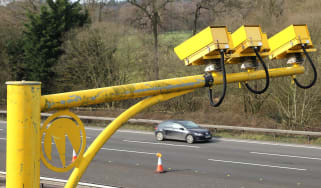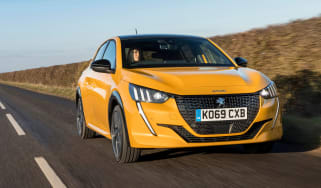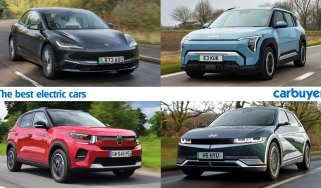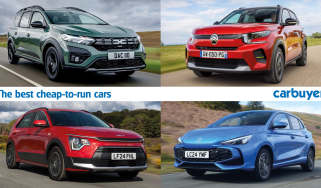Motoring legal advice: your questions answered
Should I stop for an unmarked police car? Can I use my foglights all year round? This, and other legal questions answered
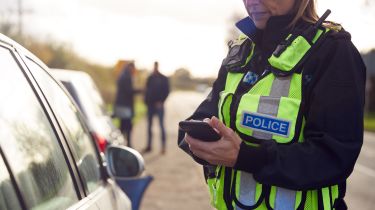
Driving is something many of us do every day, but when it comes to the rules and regulations on the road, things can sometimes get a little confusing. Whether you're a seasoned driver or you’ve just passed your test, understanding what’s legal and what’s not is crucial for your safety, peace of mind, and avoiding unwanted fines or penalties.
In this article, we’ll answer some of the most common legal questions drivers face. From understanding which category of driving licence you need to take the wheel of a motorhome, to what happens when a speed camera flashes you – we’ve got you covered. We’ll also look at other essential topics, helping you navigate the ins and outs of the UK’s driving laws.
Will I be prosecuted if a hire car or work vehicle I drove wasn’t taxed?
Enforcement action is usually taken against the registered keeper of an untaxed car, not the driver. Regardless of the vehicle’s ownership, you as the driver have a responsibility to ensure it is road-legal.
It’s also worth noting that tax discs haven’t been issued since October 2014. The entire process is now taken care of online.
You can check that a vehicle is taxed online at gov.uk/check-vehicle-tax
One of the lights on my car is defective. Can I still drive it on the road until I can get it fixed?
The following assumes you aren’t towing a trailer. Generally speaking, an offence isn’t committed if the light stopped working during your journey or if you have already made plans to ensure it’s repaired as soon as possible.
However, there are significant and obvious safety implications for driving any vehicle with a defective light, so you should regularly check they operate correctly. If a warning shows on the dash for a defective light, get it checked and changed as soon as possible.
What are the rules for drivers in relation to advanced stop lines for cyclists at traffic lights?
Some traffic-light-controlled junctions have an advanced stop line – a second stop line for cyclists to position themselves in front of other traffic. These areas will often be highlighted in different-coloured tarmac and with a bicycle graphic painted on the road.
You can find an illustration in rule 178 of the Highway Code.
Drivers, including motorcyclists and scooter riders, must not cross the first stop line if the lights are red. Doing so could lead to a £100 fixed penalty and three penalty points on your driving license.
Should the lights change from green to amber, drivers, motorcyclists and scooter riders are permitted to stop in the marked area if they cannot safely stop before the first stop line. However, you must stop before the second stop line.
Drivers, motorcyclists and scooter riders must avoid blocking or encroaching on the marked area at other times, such as when the junction is blocked. Larger vehicles, such as vans and trucks, should also stop far enough behind the first line to have a clear view of the whole area where cyclists may be waiting to allow for the blind spot in front of the vehicle.
Cyclists are encouraged to cross the first line, but crossing the second line when the traffic signal is red could result in a £50 fine.
Can I take a 'selfie' while I’m driving?
No. It is illegal to use a handheld mobile phone or device while driving. Even using the device hands-free could land you with a fine and penalty points, or a more serious conviction, if your driving is deemed to be dangerous by the police.
You cannot use a handheld phone while stopped at traffic lights, queuing in traffic, stationary but the car’s engine is switched on even if it’s not running due to stop-start technology, or even if the phone is switched off or in flight mode.
The only instances when you can use a phone while driving are to call 999 or 112 in an emergency when it’s otherwise unsafe to stop the vehicle. Or, when you’re making a contactless payment in a vehicle that is stopped, such as a motorway toll booth, using the phone to park the car remotely, or you are parked and the engine is turned off.
Using a handheld device while driving can result in six penalty points on your driving licence and a £200 fine. More serious incidents can be dealt with in court and lead to a driving ban and fine of up to £1000 (£2500 for bus and lorry drivers).
What should I do if my car is stolen from a railway car park?
Railway car parks differ from most other car parks in that they fall under the jurisdiction of the British Transport Police. You should call their non-urgent crime reporting line on 0800 40 50 40.
However, if you have reason to consider the situation an emergency, then you should call 999.
You will also need to contact your insurance company.
What category of driving licence do I need to drive a motorhome?
You need a Category C1 driving licence to drive a motorhome with a maximum authorised mass (MAM) of between 3.5 and 7.5 tonnes. Motorhomes with a MAM of more than 7.5 tonnes require a Category C licence.
Will I still be able to get car insurance if I have a conviction?
Car insurance companies will usually ask if you have any convictions, which you must answer truthfully. Failure to do so could lead to your cover being cancelled, and may mean your insurer will refuse to pay out in the event of a claim.
With a conviction, you may find your insurance premium increases. Every car insurer is different and will have a different view on insuring motorists with convictions. It will also depend on the type of conviction as some offences are considered more serious than others by insurers.
Can I insure the same car with a number of different insurers?
It is possible to insure a car more than once and with different insurers, though you may well end up paying twice for no added cover.
If you try to claim for the same accident from different insurers, that is fraud and could lead to a prison sentence. Insurers share all incidents reported to them and any subsequent claims, so you will be found out.
You can insure the same car with different policies for parents and a learner driver if the parents want to avoid risking their no-claims bonus. However, it’s usually cheaper to add an extra driver to a policy, and it could lower the cost for a learner if they add an experienced driver to their policy.
However many drivers and policies there are on a single car, a claim can only be made on the policy of whoever was driving at the time of the incident.
What information do I need to provide to the DVLA if I sell my car?
The easiest way to inform the DVLA that you’ve sold your car is using the website: gov.uk/sold-bought-vehicle
You can use this website whether you have sold the car to a private individual, a car dealer, sold it abroad, or scrapped it. In any of these cases, you will need the 11 digit reference number from the V5C logbook.
If you have sold the car to a private individual, you should give them the ‘New Keeper’ slip from the V5C. When you have informed the DVLA of the change of registered keeper, you should destroy the logbook. This is the same process if you have put the vehicle registered keeper into a different name, such as passing a car on to one of your kids or another family member but not taking any payment for the car.
Alternatively, if you sell to a motor trader, give them the whole logbook and tell the DVLA you have sold the car, and destroy the yellow ‘sell, transfer or part-exchange your vehicle to the motor trade’ section of the logbook.
In the event of scrapping the vehicle, tell the DVLA this is what you have done and destroy the logbook.
You can still do any of the above by post using Section 9 of the V5C logbook, which is called ‘selling or transferring your vehicle to a motor trader, insurer or dismantler.’ The process is much the same when selling to a private buyer. Using the postal method is slower but has the same result. You can only inform the DVLA you have sold a car abroad using the postal method and will need to complete the ‘permanent export’ section of the logbook to send to the DVLA. In this case, you will need to supply the new keeper’s name and address to the DVLA, and give the remaining part of the logbook to the new owner to register the car in their chosen country.
A speed camera has flashed me. When will I know if I am going to get a ticket?
The police must serve your Notice of Intended Prosecution (NIP) to arrive with the registered keeper within 14 days of the offence. As long as it is posted within the time limit, and posted first class, it is presumed to be “good service”, although this can be challenged. If the Notice of Intended Prosecution is served after 14 days with no mitigating circumstance why it is late, the offence cannot proceed in court.
Can I see the photographic evidence being used to issue a speeding ticket?
Most police forces will only release photographic evidence supporting a speeding offence if you challenge it and plead not guilty. If that’s the case, you can request to be sent the evidence, which will usually include both the photograph and/or a statement. You will need your Notice number, vehicle registration, and the person named on the Notice of Intended Prosecution to ask for this.
As with any other offence, the accused has the right to defend themselves. In order to do this, evidence of a breach of the law must be provided to the accused. There’s no specific requirement to what this evidence may be, only that it must support the breach of the law and you will be able to have a fair hearing.
Should you plead not guilty, you’ll lose the right to pay the ticket and you will have to attend court.
Is it an offence not to carry all relevant documents when driving, so they can be produced for a police officer upon request?
Failure to produce your driving licence, certificate of insurance, and MoT (if your car needs this) is an offence. However, it’s recommended that you don’t leave your documents in the car due to the risks associated with them being stolen.
As a result of this, the usual course of action is for a police officer to issue a HO/RT1 form – also called a ‘producer’. This will require you to produce the documents at a police station of your choice within seven days. If this is done, and the documents are in order, then the matter will be closed.
If you don’t present them within seven days, or they’re not in order, you’ll be reported for failing to produce the documents at the time of the request for production. You’ll then be summonsed to attend court.
Is it illegal to use a CB or two-way radio whilst driving?
It’s an offence to use a mobile phone or an ‘interactive communications device’ when driving, but the law has an exemption for two-way radios that are designed or adapted:
"for the purpose of transmitting and receiving spoken messages, and operate on any frequency other than 880MHz to 915MHz, 925MHz to 960MHz, 1710MHz to 1785MHz, 1805MHz to 1880MHz, 1900MHz to 1980MHz or 2110MHz to 2170MHz."
According to OFCOM, a CB should transmit in the 27MHz range – an exception created due to the frequencies used by taxis and some government organisations.
However, it’s important to note that any activity at the wheel, whether it’s using a two-way radio or using an infotainment touchscreen, can increase the risk of a crash.
Even if you’re using a device that’s exempt from mobile phone legislation, with or without hands-free, you can still be prosecuted for careless driving or dangerous driving if you’re driving badly. If you kill someone in a crash caused by speaking to someone on a mobile phone or CB radio, you can expect a lengthy prison sentence.
How many points can I have on my licence before I face a ban?
The current penalty-points system allows endorsements of varying severity to be applied to your licence. If you receive 12 penalty points within three years, you’ll face disqualification under the ‘totting up’ rules.
Drivers with nine or more penalty points are unable to accept any further fixed-penalty tickets, and must go to court.
If you acquire six penalty points within two years of passing your test, you’ll automatically have your licence revoked.
Penalty points can last either four or 11 years, depending on the offence.
I'm buying a secondhand car, but now that road tax is non-transferable, how do I tax it at the point of sale?
There is no requirement to display a tax disc in a car – this was abolished on 1 October 2014. You can also no longer pass on road tax with the car when you sell it. That means anyone buying a used car needs to tax it immediately. This can be done online, over the phone or in a Post Office.
To tax a car online, you’ll need to go to gov.uk/tax-disc. You’ll need to enter either:
- The 12-digit number on your new keeper supplement (V5C/2), if you’ve just bought the car
- The 16-digit number on your vehicle tax renewal letter (V11)
- The 11-digit number on your vehicle’s logbook (V5C)
You can opt to pay in full, or monthly by Direct Debit.
To tax a vehicle over the phone, you should call 0300 123 4321 (textphone 0300 790 6201). The automated process takes three to four minutes and calls are charged at the local rate.
You’ll need the same information as you would applying online, such as the reference number on your V11 or V5C. You can pay using your credit or debit card.
You can still tax your vehicle at a Post Office, although not all outlets still offer the service. You’ll need to take:
- Your completed V11 reminder, V5C logbook or new keeper supplement (V5C/2)
- Your valid MoT test certificate, if required
- Payment, and your bank details to set up a Direct Debit
- Vehicle logbook (V5C) in your name or the green ‘new keeper’ slip when you’ve just bought a car
Motorists in Northern Ireland also need an insurance certificate or cover note.
Do there have to be signs to warn motorists that there are speed cameras (both fixed and mobile)?
There’s no law to say fixed or mobile speed cameras need to be marked, signed or at a particular position. Police forces have codes of practice and best-practice guides – but these are guidelines, not the law.
Is it illegal to reverse a car onto a main road from a minor road?
While it’s not illegal to reverse from a minor road onto a main road, it certainly isn’t advisable. As their name suggests, main roads tend to be busier than minor roads, meaning there’s an increased chance of a crash.
If a collision occurs as a result of you reversing onto a main road, you may be prosecuted for driving without due care and attention.
Do I have to report to the police a collision that happened in a car park?
There are clear circumstances in which you have to stop and provide your details. In some instances, you may be asked to produce your insurance certificate. If you’re unable to do this, you must report the incident to the police – it’s an offence not to.
You must do this if you’re the driver of a ‘mechanically propelled vehicle’ such as a car, motorcycle, bus or lorry, that has been involved in a crash on the road or in a public place if:
- Someone other than yourself is injured
- Damage is caused to another vehicle or to someone else's property, such as street lamps, signs or bollards
- An animal, other than one in your own vehicle or trailer, has been killed or injured. Animals are defined here as any horse, cattle, ass, mule, sheep, pig, goat, or dog
It’s important to note that some car parks, such as supermarket car parks and some multi-storey car parks, are classed as public places. Car parks belonging to private organisations where members of the public wouldn’t ordinarily be permitted aren’t classed as public places. Accidents occurring there should be reported directly to your insurance company. If in doubt, you should report the matter to the police and be guided by their advice.
When can I park on a single yellow line?
A single yellow line is normally placed to prevent parked vehicles causing an obstruction and putting you, and other road users, at risk.
Signs in a single-yellow-line zone will identify the times when you can’t park there. This is often between 8am and 6pm, but you should always check the sign prior to parking. You could be fined for parking illegally, or even have your car towed away.
When can I use the horn in my car?
You should only use your car horn to warn someone of danger – not to indicate annoyance or attract the attention of other road users or passers-by.
The horn shouldn’t be used when your car is stationary – unless another vehicle on or near the road presents a danger.
Horns should also not be used on a restricted road – one that has street lights and a 30mph speed limit – between 11:30pm and 7am.
What types of vehicle aren’t allowed in the outside lane of a motorway?
Certain types of vehicle aren’t permitted to use the right-hand lane, also called the outside lane, when three or more lanes are open for use by traffic travelling in the same direction.
These are:
- Goods vehicles with a maximum laden weight of more than 7.5 tonnes
- Goods vehicles with a maximum laden weight of more than 3.5 tonnes but less than 7.5 tonnes that must have a speed limiter
- Passenger vehicles constructed or adapted to carry more than eight seated passengers in addition to the driver, with a maximum laden weight of more than 7.5 tonnes
- Passenger vehicles constructed or adapted to carry more than eight seated passengers in addition to the driver, with a maximum laden weight of less than 7.5 tonnes, that must have a speed limiter
- A motor vehicle towing a trailer
- A motor tractor, light locomotive or heavy locomotive
Naturally, there are exceptions to this:
- When it’s necessary for the vehicle to pass another vehicle carrying or towing a load of exceptional width
- When not moving into the outside lane would cause someone danger of injury, or inconvenience other traffic
Can I park on the pavement?
In England and Wales, local authorities can prohibit parking on the pavement. If so, signs will state the roads where parking on the pavement is specifically prohibited. The penalty for contravening this will be a fixed penalty notice.
Parking a vehicle on the pavement could constitute an offence of obstruction, leading to a fixed penalty notice. This can cause a particular danger and nuisance for pedestrians and wheelchair users. Single yellow line waiting restrictions apply to the pavement and verge as well as the road
It is an offence to drive on the pavement – something that will have occurred in order to park a vehicle on a pavement – but witnesses will likely have to be sought in order to secure a prosecution. This can be tricky. It is legal to drive across a section of pavement when accessing a property via a lowered kerb.
In Scotland, the Transport (Scotland) Act 2019 banned pavement parking, with the exception of ensuring safe access for emergency vehicles. This ban came into force in November 2023 and drivers can be fined £100 for pavement parking.
What should I do if an unmarked police car is flashing me to stop?
The following advice is for anyone who feels vulnerable when being asked to stop. If you’re with companions or feel comfortable in stopping, this advice may not be for you.
Although an unmarked police car can stop vehicles, it must contain a constable in uniform in order to carry out that stop.
If you are flashed by an unmarked car as an instruction to pull over or stop, you are permitted to drive steadily to the nearest public place, such as an open petrol station, police station or any other location where there are a lot of people.
If you are in a relatively deserted area, consider looking for an occupied house and pull into their driveway. You can explain to the householder later.
If you’re not able to stop in a public area, you should signal and acknowledge that you have been asked to stop. Never speed off as the police could think you’re trying to get away.
Once you’ve stopped, stay in the car and keep the doors locked. If you have a mobile phone, keep it nearby just in case you need it. You can request to see the police officer’s warrant card, which should include their name and photograph, through the closed window.
If you are suspected of drink or drug driving, none of these actions would invalidate an officer giving you a preliminary test as you have only temporarily interrupted your journey and are still driving for the purposes of that law.
Can my child use their electric scooter, go-ped, mini-moto, hoverboard or Segway on the road or pavement?
Despite often being sold as toys, electric scooters, go-peds, mini-motos, hoverboards and Segways may all be considered as motor vehicles in legal terms. That means they could be subject to all the usual requirements that also apply to cars or motorcycles such as tax, insurance, registration and licensing, and driver licensing.
They can’t be used on a road unless they conform to the law. Many such vehicles will never be 'road legal' as their design fails to meet UK or EC road vehicle standards. These vehicles can’t be used on the pavement legally either.
The only place they can be used is on private land with the landowner's permission.
Because such vehicles are small, many falsely believe them to be toys and therefore exempt from the law. The legislation doesn’t exempt toys and the physical size of the vehicle has no bearing on whether it is a toy or not.
If these vehicles are used on the road or pavement, the rider may be committing a range of offences. Their parent/guardians may also face prosecution for aiding and abetting or permitting the offences.
What happens if I get points on my provisional licence or as a newly qualified driver?
Your driving licence will automatically be revoked if you receive six or more penalty points within two years of passing your first driving test.
To get your licence back, you will need to apply and pay for a new provisional driving licence, drive as a learner would – with L-plates and under the supervision of a suitably qualified driver – and pass both parts of your driving theory test as well as your practical test.
It is possible to acquire penalty points on a provisional licence before you pass your driving test. If you receive more points after passing your test that take your total to six or more, your licence can be revoked.
Having your licence revoked when you have acquired six or more penalty points does not 'wipe the slate clean'. Penalty points last for three years so any live points will still be shown on your licence when you get it back.
Revocation only applies where the offence that causes the points to total six or more is committed during your probationary period – two years after passing your test. If you receive six or more points before you take your test, you can still pass and obtain your licence. But if you receive any more within two years of passing, your licence will be revoked.
If you receive 12 or more points within a three year period, you will be liable to be disqualified – usually for at least 6 months – under the ‘totting up’ principle.
Can I use my fog lights when it's not foggy?
You can only use front or rear fog lights when visibility is seriously reduced as they can dazzle other road users. Rear fog lights can also obscure your brake lights.
You must switch all fog lights off when visibility improves.
Rule 226 of Highway Code says: “You MUST use headlights when visibility is seriously reduced, generally when you cannot see for more than 100 metres (328 feet). You may also use front or rear fog lights but you MUST switch them off when visibility improves.”
Can I go on a speed awareness course instead of having points on my licence?
If you’ve been caught speeding, you may be offered the opportunity to attend a speed awareness course rather than being issued with penalty points and a fine. You can also make it known you are willing to attend a speed awareness course. Whether you’re eligible for a speed awareness course depends largely on the prosecuting police force. These are the guidelines operated by one police force:
- You have admitted to being the driver of the vehicle at the time of the alleged offence and returned the documentation within the 28-day period calculated from the date the notice was sent to you.
- No more than 12 weeks have elapsed since the date of the alleged offence.
- There were no further offences committed at the time of the alleged offence. - You have not attended a speed awareness course within the 3 years prior to the current offence.
- You were driving at a speed that qualifies as per the table below:
| Limit | Device tolerance | Fixed Penalty when education is not appropriate | Speed Awareness if appropriate | Summons in all other cases and above | |
| From | To | ||||
| 20 mph | 22 mph | 24 mph | 24 mph | 31 mph | 35 mph |
| 30 mph | 32 mph | 35 mph | 35 mph | 42 mph | 50 mph |
| 40 mph | 42 mph | 46 mph | 46 mph | 53 mph | 66 mph |
| 50 mph | 52 mph | 57 mph | 57 mph | 64 mph | 76 mph |
| 60 mph | 62 mph | 68 mph | 68 mph | 75 mph | 86 mph |
| 70 mph | 73 mph | 79 mph | 79 mph | 86 mph | 96 mph |
| All speeds identified above are those shown on the speed device, speedometer or other detection devices | |||||
The National Driver Offender Retraining Scheme website provides information about all speed awareness course centres and providers in England and Wales.
There are no speed awareness courses in Scotland.
What is the national speed limit for cars?
The national speed limit varies depending on the type of road you’re on and the type (or category) of vehicle you’re driving. It is also different in Wales.
You can identify a road with the national speed limit by a white circular sign with a black strip running diagonally across it from right to left.
- If you are on a dual carriageway and driving a car or motorcycle, the national limit is 70mph
- If you are on a single carriageway and driving a car or motorcycle, the national speed limit is 60mph.
The national speed limit is 10mph less than those mentioned above for:
- Non-car-based vans
- Vehicles with more than eight passenger seats
- Cars, motorcycles, car-derived vans, and dual-purpose vehicles when towing a caravan or trailer
As with any other speed limit, the national speed limit is the maximum speed you are allowed to travel at – it doesn’t mean it’s safe to drive at that speed irrespective of road conditions.
Driving too fast for the road and traffic conditions is always dangerous. Always reduce your speed when:
- The road layout or condition presents hazards, such as bends
- Sharing the road with pedestrians, cyclists or horse riders, particularly children, and motorcyclist
- Weather conditions make it safer to do so
- Driving at night, as it is more difficult to see other road users
Is there a difference between the registered keeper and the owner of a vehicle?
Yes. The DVLA makes a point of saying that the person named on the registration document (V5C – also known as the logbook) is not necessarily the owner.
The registration document (V5) is not proof of ownership. The registered keeper should be the person who uses the vehicle, and so isn’t necessarily the vehicle’s owner or the person paying for it.
The registered keeper is responsible for the vehicle, and will be the person who correspondence from the police or DVLA will be directed to. The owner is the person who paid, or is paying for, the vehicle. If you’re the owner and not the regular user or keeper, you should change the details on your V5C.
Company car usage and ownership illustrates this best. The vehicle could be owned by the company, but the registration document should show the employee who uses the car day-to-day as the registered keeper.
If a car is used by a married couple, joint ownership of most property is assumed. That means if the husband were stopped for driving without insurance, the police would likely accept he was the joint owner and not pursue the wife for additional offences, such as an owner permitting no insurance.
Insurance companies usually insure the vehicle’s primary user, and can insist that that person is also the registered keeper.
Someone has parked their car and it is blocking my driveway
Local authorities have responsibility for the enforcement for parking offences in many – but not all – counties in England and Wales. Parking on a dropped kerb over a driveway is one such offence.
Should a vehicle block access to your driveway, you should speak to your neighbours in the first instance. It may be one of their friends, relatives, or a tradesman. If you’re unable to find out, contact your local authority’s parking enforcement team.
Your local authority will tell you if responsibility for dealing with the issue still lies with your local police force. If so, you’ll need to contact them instead.
Policy may vary from force to force and council to council; some may only attend if your car is blocked in and you can’t get out.
If someone has parked on your driveway, this is trespassing. It is a civil matter, so not one the police can help with.
Someone has left a car on my land, what should I do?
It is an offence to immobilise, move or restrict the movement of a vehicle in a way that prevents someone from removing the vehicle concerned (although that person must be entitled to remove it).
That means an offence may be committed if a landowner clamps or tows away the vehicle. To be guilty of that offence, they must have the intention of preventing the movement of the vehicle by someone entitled to do so.
That means it’s possible for a landowner to move an obstructively parked car a short distance to gain access to their property, as long as it isn’t positioned in such a way that the driver of the vehicle is prevented from subsequently retrieving it. You must take every care to show there was no intention of denying the vehicle’s driver the opportunity to remove it.
Some individuals have lawful authority to immobilise, move or restrict the movement of a vehicle. These include the police, local authorities, traffic wardens, parking attendants and civil enforcement officers.
Policies may vary from region to region as to who undertakes such a role in relation to private land, but you should contact your local police or local authority to check who will take responsibility for its removal. The duty to remove a vehicle arises where it appears to them that the vehicle has been abandoned without lawful authority. If the vehicle looks stolen (e.g. it has damage to the locks), then contact the police who will make further enquiries.
If you want to move the vehicle yourself, or make arrangements for this to be done, you should give the owner of the vehicle a reasonable amount of time (say, 14 days) to remove it. You can place a notice on the car stating that if the car is still there after 14 days you will have it moved or removed. State the reason why the vehicle will be removed (i.e. it is obstructing the lawful use of private land) and where you intend to move the vehicle to.
If the vehicle has number plates, you can complete the DVLA’s Form V888. As long as the request is legitimate, the DVLA will provide you with the registered keeper’s contact details. Write to them to inform them of your plans, send the letter as recorded delivery and keep a copy for yourself.
Once you have given reasonable notice that the car will be towed away, the reasons for it being towed away and its intended destination, then it is likely that you will have avoided liability under the aforementioned offence. In effect you will have shown that there was no intention of preventing or inhibiting the driver of the vehicle from retrieving their vehicle.
More driving advice
Recommended
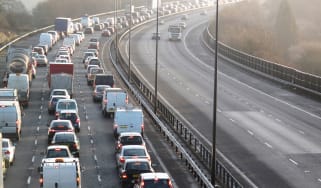
Beat the Easter weekend traffic: secrets of a stress-free car getaway
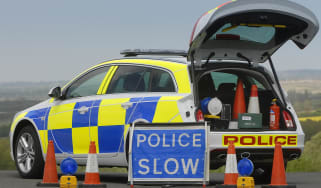
Speed awareness course: cost, who’s eligible, and how long does it take?
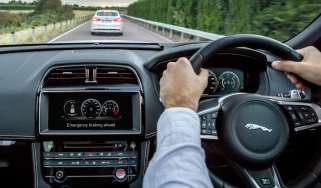
Driving in Germany: laws, tips and Autobahn speed limit
Most Popular
Tips & advice

Car dashboard warning lights: what does each symbol mean?

Electric car charging stations: public networks, charger types, apps and maps


